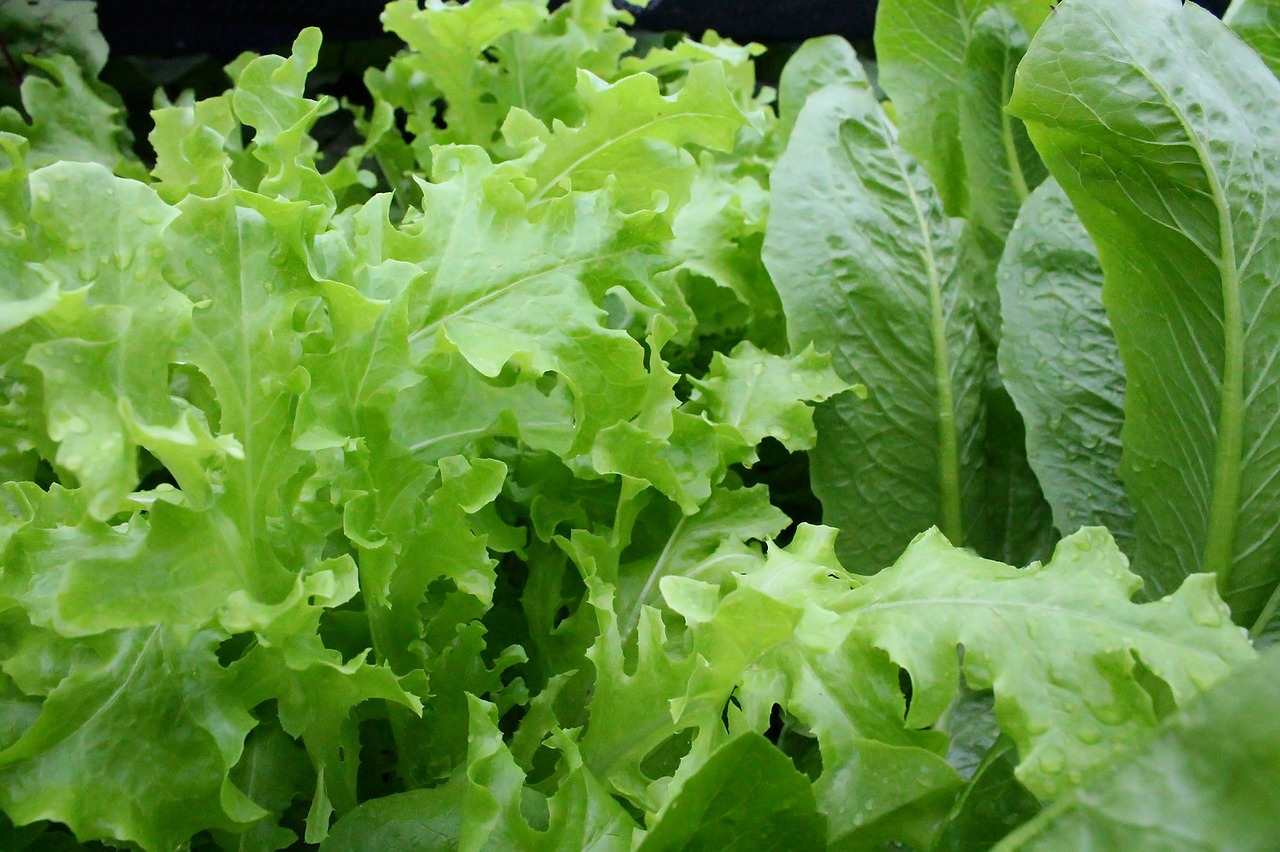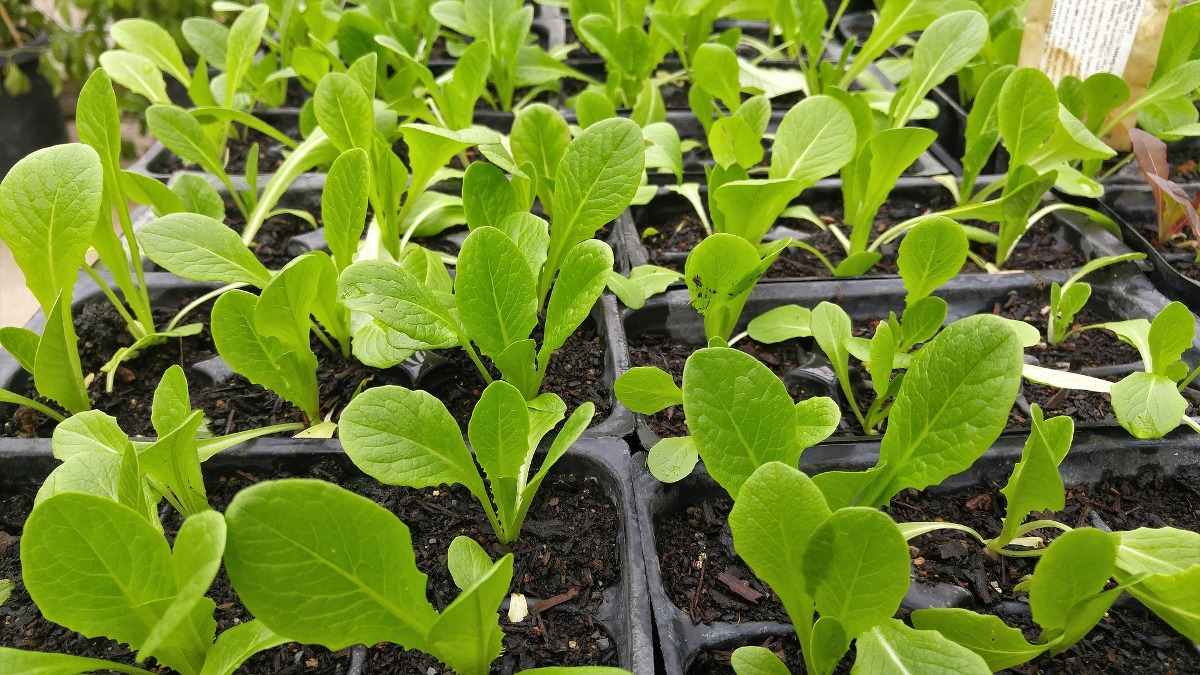Introduction: Hi gardeners, today we are back with a very good information of growing leafy vegetables in pots. Leafy vegetables are more nutritious and contain fewer calories than most other vegetables, and they are easy to grow. Most greens can be grown in relatively short, cool growing seasons, making them obtainable for fresh harvest earlier than most other crops. If properly planned, fresh, leafy vegetables can be harvested all season long. Some of the general leafy vegetables are brassicas (Pak Choi, mustard, and kale), kangkong (water convolvulus), lettuce, spinach, and amaranth. Tender leaves and, in several cases, stems are consumed raw or cooked. These vegetables are valuable sources of vitamin A and vitamin C, iron, calcium, folic acid, and dietary fiber. What are we waiting for? Let’s get into the details of growing leafy vegetables in pots.
A step by step guide to growing leafy vegetables in pots
Leafy vegetables adapted to cool Indiana spring and fall growing conditions contain lettuce, spinach, mustard, collards, endive, and kale. Many new cultivars of these cool-season crops include improved heat tolerance, making them productive into early summer. Root crops such as beets and turnips could also be harvested for their young, tender foliage. Greens that produce in the heat of summer contain New Zealand spinach and Swiss chard.

Conditions required for growing leafy vegetables in pots
Leafy vegetables grow best in open, level areas where the soil is loose, rich, and well-drained. Leafy vegetable crops tolerate shade better than plants grown for their fruits or roots, at least six hours of sunshine daily will help ensure a high-quality harvest. Avoid planting leafy vegetables in heavy clay or sandy soils. The soil pH must be between 5.8 and 6.8.
Most leafy vegetable plants can be planted as early in spring as the soil can be worked. The soil is ready for tilling and planting if a handful of soil crumbles when squeezing it. Seed can be directly sown in the garden for many leafy greens and must be planted at the proper depth to ensure good germination. The seed packet must include information on planting depth and spacing. Crops such as lettuce, spinach, chard kale, and collards can be transplanted to get an early start.
Home gardeners can select that decide to harvest only a few leaves as they are needed. If you harvest leaves as required, harvest the outer, more mature leaves first, leaving the young, inner leaves to continue growing.
You should not miss the Vermiwash Preparation Process.
Keep the soil fertile
Successive crops of vegetables take nutrients out of the soil, so after every crop you remove, add a 2 to 3-inch layer of compost to the soil and work it in well.
Choose the perfect spot for your leafy vegetables
Keep in mind that lettuce is a cool-season annual, meaning that it grows best in spring and fall and tends to bolt that is, increase a tall seed stalk and start tasting bitter in the heat of the summer. To keep harvesting sweet leaves as long as you can, choose a site for your container that gets plenty of sun during mornings and evenings, but shade in the heat of the afternoon.
Choose a container for growing leafy vegetables
A tray, pot, or window box that is at least 18 inches across and 6 to 12 inches deep is an excellent choice. Deeper pots allow more room for roots and maintain the soil from drying out as quickly.
The container can be made of clay, plastic or wood, but wants to have drainage holes in the bottom and you may want to use a self-watering container or position one tray inside another to prevent leaks. Fill the container with an excellent quality potting mixture; some mixes are formulated to retain moisture that can be beneficial in a dry climate. If containers are placed outside, plants and soil will be subject to more water loss and will want a larger reservoir of soil moisture. Over time, mineral deposits and other debris can accumulate on the container and may disease organisms and cause problems for plants.
Manures and fertilizers for growing leafy vegetables
Being a leafy vegetable, it wants more nitrogen for crown growth. It is better to apply fertilizer based on soil analysis. The whole of FYM and phosphorus and half of the nitrogen is useful at the time of seedbed preparation. Then the remaining half nitrogen is applied in two split doses, one after each cutting followed by alight irrigation.
The nutrients your leafy vegetables need are available in commercial fertilizers that are 5-10-10 or 10-10-10, and organic fertilizers such as bone meal, blood meal, and dehydrated manure. The numbers 5-10-10 or 10-10-10 is referring to the percentages of nitrogen (N), phosphorus (P) and potassium (K) in the bag of fertilizer.
You may also like the Solar Drip Irrigation System Benefits.

Best leafy vegetables in pots
Spinach
Spinach grows easily and effortlessly at home. You can grow Spinach in any container that’s at least 6 inches deep and feet wide. Spinach likes a lot of sun but not too much that it burns the plant leaves. So plant it in semi-sun or an area which receives sun for about 4-5 hours a day. Growing spinach in containers is a very easy, nutrient-rich, fast-growing crop to start with. Growing spinach in a pot or container is ideal. It allows you do harvest all of the delicious plant leaves for yourself before some other four-legged critter dines on your greens before you get to them. Container grown spinach is simply accessible too. Spinach can be grown on the window sill or right outside the kitchen door on a balcony.
Celery
Celery likes a soil pH level of 6.0-6.5, alkaline. Select a container that is at least 8 inches deep and long enough to plant additional celery plants 10 inches apart. Don’t use unglazed clay pots, if possible, as they dry out quickly and celery plant likes to stay moist. Plastic containers are a great option in this instance, as they maintain moist conditions.
Swiss chard
Swiss chard wants plenty of roots to spread its roots, so make sure you have a pot that’s at least 6 to 12 inches. Select a good pet or compost mix soil. When growing Swiss chard in containers, the pot does not need to be too deep because the root system isn’t deep but you do want to take into account the large leaves. If you sow your seeds, they can be started quite early outdoors, because they thrive in cooler temps. Sow the seeds ½ to an inch apart (1-2.5 cm.) and thin the seedlings to 2-3 inches (5-8 cm.) apart. Swiss chard is ready to be picked within 4 to 6 weeks.
Kale
It is very easy to grow in your balcony or patio and even indoors. You can plant up to 2 kale plants in a standard 12 inches or 5-gallon pot and move it easily around in the shade or out of the cold in winter. Growing kale indoors is a great method to ensure a fresh supply of this delicious green all year long.
Mustard Greens
Mustard greens are very tolerant of frost and heat, and remarkably easy to grow in pots, indoors or outdoors. Obtain a shallow 6 to 8 inches deep pot; a window box would be fine, fill it with regular potting mix with a lot of organic matter.
Mizuna
Mizuna, like most greens, is simply grown in containers. Select a container at least 6 inches deep and wide. Grow Mizuna plant in compost-rich fertile soil. Grow Mizuna plants in full sun in cool weather; in warm or hot weather grow plants in partial shade.
Incase if you miss this: Farmyard Manure Preparation Methods.
Grow Mizuna plants in well-draining potting soil. Mizuna grows best in compost-rich soil and keeps the soil evenly moist; not too wet and never completely dry. Prepare planting beds ahead of sowing or transplanting by adding plenty of aged compost and aged manure.
Arugula
Growing arugula in pots is easy. You can grow arugula almost every climate, though planting time may differ. Make sure to use a quality potting soil and maintain it moist but not wet. Also, space out the plants 4 to 6 inches apart, when they grow a bit tall. Start harvesting the mature greens after 6 weeks. Arugula plant performs well in moderate conditions and bolts rather quickly in sultry weather.
Lettuce
Growing lettuce in containers requires the right type of pot or container and planting medium. Lettuce needs ample room for roots but you can grow several Lettuce varieties in 6 to 12-inch pots. The Lettuce needs a consistent supply of moisture as they are almost 95 percent water but cannot tolerate wet roots. A clay pot gives a permeable surface that can evaporate any excess water and prevent soggy roots. Make sure there are adequate drainage holes in whatever pot you choose. The most important resource when growing lettuce in pots is water. Lettuce plant has shallow roots and responds best to consistent, shallow watering. Plants grown in the garden want at least an inch per week; lettuce in pots needs a bit more. Numerous pests enjoy lettuce as much as you do. Combat them with blasts of water and for slugs, trap them with containers of beer.
Sorrel
Sorrel is an easy choice for container gardeners. Grow it as an annual in a wide pot that is at least 8 to 10 inches deep. Select a spot with good drainage. Sorrel likes a slightly acidic soil pH level; somewhere in the range of 5.5 to 6.8. Since it is grown for Sorrel leaves, a soil rich in organic matter will give you lots of leafy, green growth. Keep the soil slightly moist, and maintain the sunlight by moving the container according to the temperature and intensity of the sun is the main advantage of growing sorrel in a pot.
Cabbage
Cabbage requires containers that hold 5 gallons. The roots grow relatively shallow, and you want enough space for the leaves to develop and spread. You can choose a container made from any variety of materials. Popular choices are the clay, wood barrels, and plastic pots, and planter boxes, wire baskets lined with organic material or other materials such as concrete. Prepare the soil in advance by mixing in aged manure and compost. The soil must be well-draining, roots that stand in water cause heads to split or rot.
Mache
Mache grows well in deep and large pots or containers. Fill the pot with an organic potting mix. To grow, get a tray or window box that is wide enough, 12 to 18 inches across and 6 to 10 inches deep. Mache is a cool-season crop, it can withstand temperature range down to -5°F (-20°C). Optimum seed germination temperature of Mache falls in the range of 50 to 70°F, it is a plant that resists the cold and that is why it can be grown practically all year. When it comes to soil it is an undemanding plant, still, it chooses healthy soil that is light, well-drained and rich in organic matter. Water regularly in the early morning if exposed to full sun, more frequent watering is necessary.
That’s all folks about growing leafy vegetables in pots or containers. Keep growing leafy greens. You may be interested in How to Grow Hydroponic Corn.
Hello. You missed to mention pokchoy/bokchoy. Thanks.
We will include.
Very well presented..really will assist me..in my starting a garden..kind regards